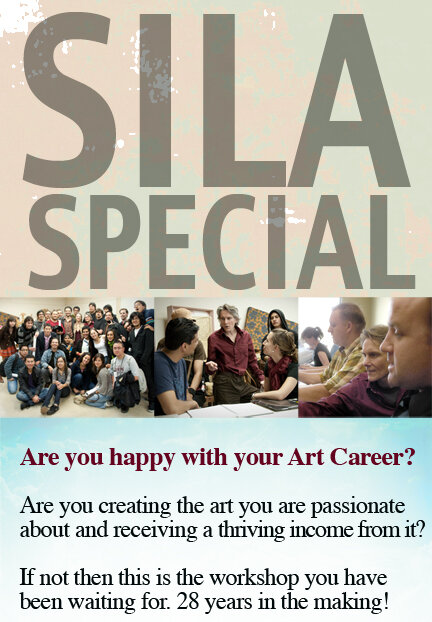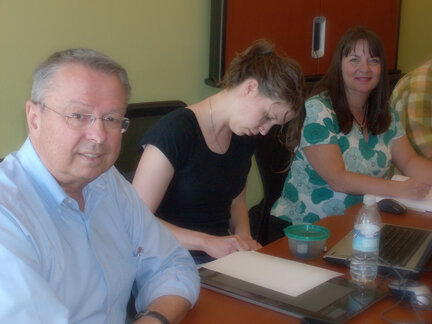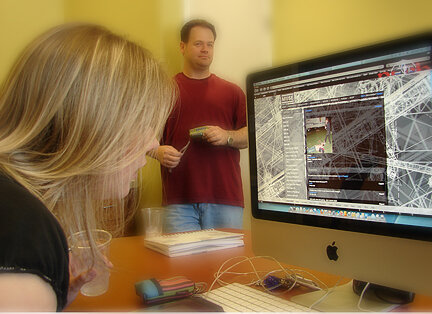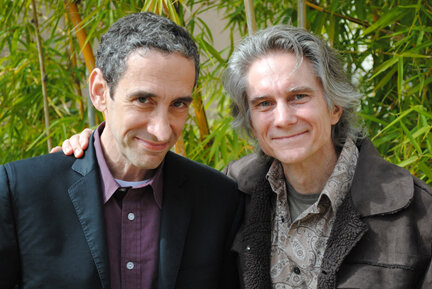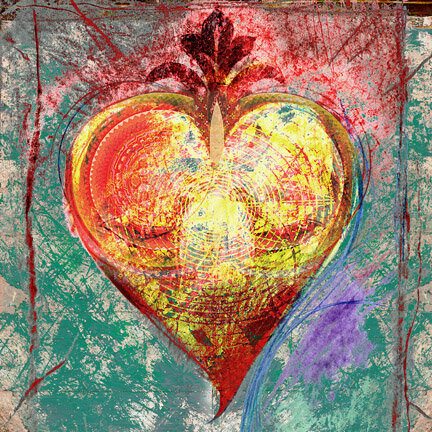For three and a half years The Orange County Register newspaper hosted an online forum called The Arts Blog. This Blog was a refreshing look at all things artistic in OC and beyond from a generally straight up conservative publication. Richard Chang was one of the inquisitive writers for this Blog and has been with the Register for a decade. Sadly, the Register recently retired the The Arts Blog but Chang keeps his eye on the creative scene with articles for the Entertainment section of the paper. He specializes in visual art, but also covers general arts and entertainment subjects, such as movies, TV, film festivals, the Orange County Performing Arts Center, etc. Chang currently contributes to ARTnews magazine, teaches an arts and entertainment journalism class at UCLA, and is a proud member of the Asian American Journalists Association.Having lived as an artist in the worlds of publishing, film and and fine arts (One of my first illustration jobs was commissioned by the Register back in the early 80's!) I wanted to hear a reporter's perspective on the state of the arts as well as his thoughts on artist sustainability.
Greg Spalenka: Recently someone mentioned my Artist As Brand workshop was akin to more of a social movement than just a class on artist empowerment and financial prosperity. Do you feel that your reportage and writing viewpoints could fall into the category of a social movement? For instance could you be considered a champion of the arts, or do you feel your strength and purpose is to focus a critical eye on a subject?Richard Chang: It’s hard to say that one person’s writing could be akin to a social movement. Maybe Karl Marx, or Steinbeck’s “The Grapes of Wrath” come close. Maybe.I do feel that I document the arts and artists around me, and that I shed light on efforts that otherwise would not get widespread attention. I’m particularly interested in ethnic American art – Native American, Latino, Asian American, etc.
Personally, I am a champion of the arts, but I’m also a journalist and a critic. I have to be careful not to give the public the impression that I’m frequently taking sides in one issue or another. Even in a highly subjective field such as visual art, it’s important for me to maintain some kind of objectivity.So, while I do share a passion for the arts with my readers and subjects, I have to keep a critical eye and distance to a certain degree. I am not an activist.
GS: Do you love being a reporter and writer? What are you committed to? Are you attracted most to the arts and entertainment fields or is there another facet you would like to explore?
RC: I do love being a reporter and writer. I feel that I was born to do it. I am committed to shedding light on darkness and allowing the truth to find a voice. “Comfort the afflicted and afflict the comfortable,” as they say. I am probably most attracted to the visual arts field, but the reality of my job is, I have to pay attention to popular entertainment. We can’t ignore the subjects that most readers want to read about. That includes TV, movies and celebrities. As part of my beat, I do cover independent film. But I’d like to explore that field a bit more. Sundance here I come!GS: How do you define artist empowerment?Believing in yourself and your ability is a huge part of artist empowerment.GS:Believing you can create awesome art is a start! What is the most amazing form of art you have experienced and written about?RC: That is a difficult question. I have to say, I’m kind of old fashioned. I love painting. There’s nothing like a fantastic Kandinsky, Basquiat or O’Keeffe. I’ve had the privilege to see and write about each one of them.GS: Art is like fashion, it changes and morphs throughout the years. Writing too. How would you describe artist sustainability in terms of historical longevity and in the context of making a living from your art? RC: I’m not exactly sure how to answer the first part of that question. As for making a living, it’s undoubtedly a difficult venture. You have to have mentors and advocates. You have to have awareness of the marketplace. It’s good to have champions of your work. You need to be your own champion. But constantly plugging your own work and self-promoting can be wearying – both for the artist and for the audience.If you’re serious about being a successful visual artist, you need to be represented by a gallery. And don’t stop working.GS:Historically artists have used the gallery system as a way to showcase and sell their art. At one time the gallery system was king but that has changed within the last decade. What are some alternatives you have seen?RC: Obviously, the Internet has had a major impact on the way art is viewed, discussed and even purchased. One can simply go online to see an artist’s work, converse about it and buy a piece or two. There are also websites such as artnet.com where you can learn more about an artist’s background and participate in online auctions.Still, nothing beats seeing work and meeting an artist in person. Alternatives to the gallery system may be venues such as the Festival of Arts, the Sawdust and Art-A-Fair, as well as swap meets.GS:Most art colleges focus on teaching conceptual and technical image making skill sets with an eye on preparing artists for the publishing, gallery, and entertainment industries. Have you seen alternatives to these corporate models? What about the challenges writers face in this regard?RC: Sure, there are alternatives. Some art colleges focus on basic to advanced visual art skills, without much attention to corporate industries. I’d say the Rhode Island School of Design (RISD) is a good example.GS: My question really pertains to venues for selling your art beyond publishing, gallery, and entertainment industries.RC: Well, as I mentioned above, art fairs and swap meets are viable alternatives. Municipal art centers sometimes have salon shows where you can sell your work. Also, getting your stuff online and selling it there. But make sure the site and company are reputable.For a great account of the conceptual critique class, read the chapter “The Crit” in Sarah Thornton’s “Seven Days in the Art World.” It’s hilarious and illuminating.As for being a writer, yes, there are professional pressures as well. Don’t we all face them?I think you have to be practical to a large extent, get your stuff published and get paid. Otherwise, you can write all you want, but you won’t make a penny.GS:However, the publishing world is changing dramatically and traditional income outlets for writers are disappearing. What are some alternatives to getting paid from your writing without going through the established publishing industry? For instance how could you, Richard Chang thrive financially doing what you love now without working for the Register or similar publishing venue? RC: An alternative to the established publishing industry would be self-publishing a book or writing for a blog or website. Unfortunately, very few blogs and websites actually pay. If one has considerable Internet know-how, one can create one’s own website and collect revenue through advertising. But that takes a lot of work, much of it not related to writing.I imagine the Internet will play a bigger and bigger role for writers, as iPads, Kindles and mobile devices take over the world, and the printed word becomes more and more obsolete. The writing field is changing constantly, and the news isn’t always great for writers -- or content producers, as they’re sometimes called. If I had all the answers, I’d be rich. But I don’t, unfortunately.GS:It appears sometimes as if the changes are coming faster! I have observed over the last two decades the walls breaking down between the so called fine art world and popular art culture. The Low Brow art movement and artists like Takashi Murakami are examples of this. What is your opinion of this evolution? RC: Honesty, I think it’s great. Art needs to grow and expand. “Low Brow” art is fantastic. Murakami has kind of spun out of control, but he’s still got talent. I can still look at his stuff. In order for a field to stay relevant, it has to evolve, change, adapt and take on new movements, high and low.How does it benefit the artist?It benefits the artist because there’s no longer a strict definition limiting what an artist can do or be. He or she can do or be anything.GS:Lastly, please offer some pearls of wisdom for artists and creative souls everywhere.RC: It may sound cliché, but follow your heart. Follow your passion, your vision. Fulfill your destiny.Don’t let the naysayers get you down. Remember, rejection is part of the process. Persevere.Enjoy the process. The journey is just as important as getting to your destination.Thank you Richard for your thoughts on the state of the arts. May you continue to shed light on the creativity that is born in Orange County and the world.To Artist Empowerment and Prosperity,Greg



